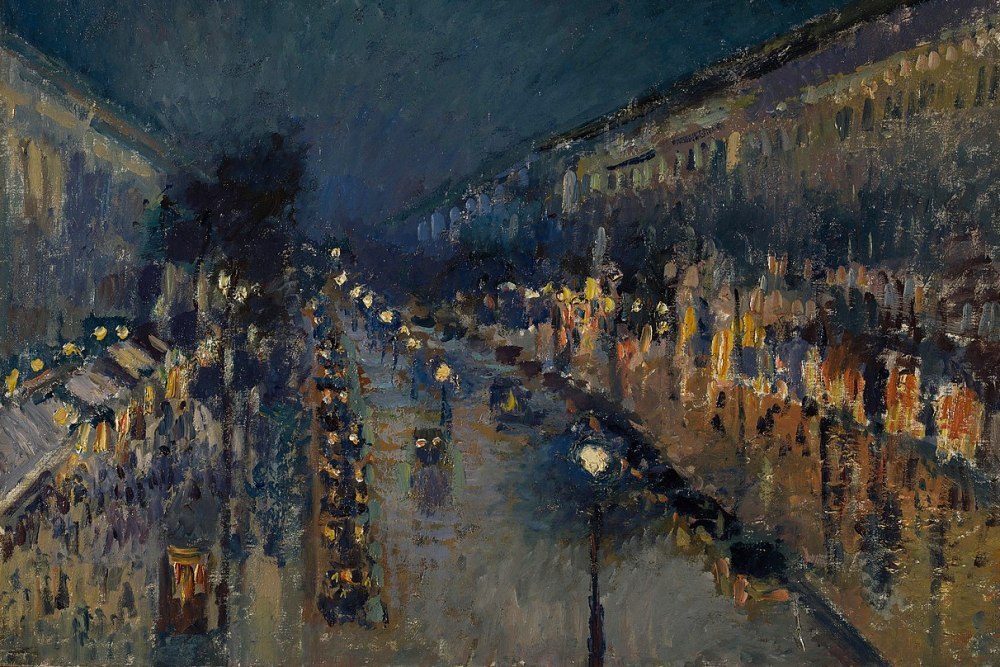
Camille Pissarro was a Danish-French painter in the Impressionist era. He is known for being one of the founding members of Impressionism and having influenced works in Post-Impressionism. Besides, the artist also experimented with Pointillism—a new technique in the art world that involved using small colour dots to form a larger image. Born on 10th July 1830, the artist mastered creating amazingly beautiful and serene landscape paintings. At the start of his career, city life with people engaged in their various leisure tasks was a common theme of Pissarro's paintings. However, in later life, Pissarro shifted towards creating a much quieter environment, like the one on La Seine and The Louvre (1903). In today's article, we will discuss some interesting facts about Camille Pissarro that you might not have known before. Read on to learn more about Pissarro's life.
Born in St. Thomas in the Caribbean
French Impressionist artist Pissarro was born on the island of St. Thomas, located in the southern Caribbean. While today it is a part of the United States (US Virgin Islands), back in the day, it was a Dutch territory. The artist's full name is Jacob Abraham Camille Pissarro, born to Frederick Abraham Gabriel Pissarro, a French national of Portuguese Jewish descent, and Rachel Manzano Pomie, a French Jewish. Camille's father, a merchant by profession, had been to the island to deal with his deceased uncle's hardware store. In a shocking turn of events, Frederick married his uncle's widow, which was unacceptable to the Jewish community in St. Thomas. Therefore, Camille Picasso had to live as an outsider in the St. Jewish community and went to an all-black school instead of the community school.
Interested in Art Since a Child
At 12, Pissarro went to France to attend the Savary Academy, a boarding school in Passy, near Paris. Pissarro developed a never-ending interest in arts and was enthused by French maestros. Seeing Pissarro's keen interest in art, his schoolmaster Monsieur Savary helped him cultivate that interest by giving him a strong ground for painting. Moreover, it was Monsieur Savary who suggested Pissarro take inspiration from Mother Nature herself and draw from it. At 17, Pissarro was called back by his father, who wished Pissarro would enter the family business and take it to higher skies. But instead, at St. Thomas, the artist brushed up his sketching and painting skills whenever he got time by creating some gorgeous landscapes of the island.
His Family Opposed Him
As with most artists, Camille Pissarro's family, specifically his father, opposed his decision to pursue an art career, as he wanted his son to join the family business. To fulfill his father's wish, Pissarro joined the business as a port clerk; however, the artist never gave up his dream. In 1852, Camille Pissarro met another Danish artist Fritz Melbye with whom he sailed to Venezuela on an art trip. For two long years, the duo travelled the lands of Venezuela, working as artists and drawing several village scenes and landscapes. At the end of the trip, Melbye became a teacher, mentor, and a very close friend of Pissaro. After two years of the art voyage, Camille Pissarro returned to St. Thomas. At this time, Pissarro's parents realized that there was nothing they could do to change his passion for art. So, in 1855 the artist, for the last time, left his home and moved to Paris to pursue his art career.
Titled as Father Pissarro
French Impressionist artist Pissarro, along with Paul Cezanne, Claude Monet, and Armand Guillaumin, dissented from the dictates of the Salon as it had rejected the group's art pieces. However, it was in 1871 that the artist opened up about the idea of exhibiting his and other artists' style of paintings through an alternative to the Salon. Therefore, with 15 other artists, Pissarro formed an art society called Société Anonyme des Artistes, Peintres, Sculpteurs et Graveurs'. Pissarro had a crucial role in establishing society and holding it up. For his contribution to society, Camille Pissarro was often referred to as Father Pissarro
by his acquaintances. The group participated in its first Impressionism exhibition in 1874 only to meet with negative reviews coming from critics. Unfortunately, Pissarro met a similar fate; the artist's entire artwork received harsh criticism for a few years.
To sum up, Camille Pissarro was not just an artist but also an inspiration to other great artists like Paul Cezanne, Paul Gaughin, and even Vincent Van Gogh. It is also worth mentioning that Camille Pissarro is the only artist whose work has been exhibited in both impressionism and post-impressionism shows. In fact, the artist is the only artist to show his work in all eight Impressionism exhibitions.
EDITORIAL POLICY
Editorial Policy: The Flash List is dedicated to providing trustworthy editorial content by maintaining strict ethical standards, journalistic integrity, and credible professionalism regardless of any remuneration as working media. The Flash List is not affiliated with third-party companies mentioned and makes no endorsement or guarantee expressed or implied. The preceding article is intended for informational reference only, and does not constitute advice of any kind. Moreover, a qualified professional should be consulted regarding any lifestyle consideration, medical treatment, or monetary transaction, etc. Content contains affiliated link(s) for which compensation was received in accordance with USFTC regulations and terms and conditions.
MORE ON THE FLASH LIST
































